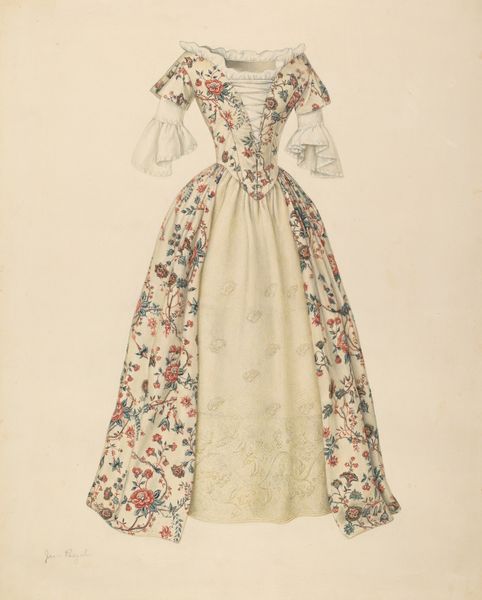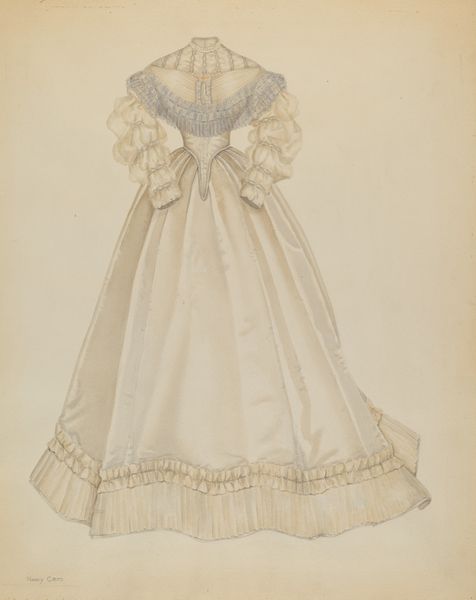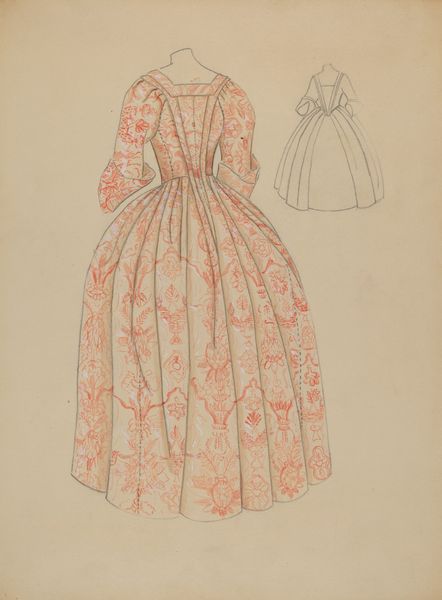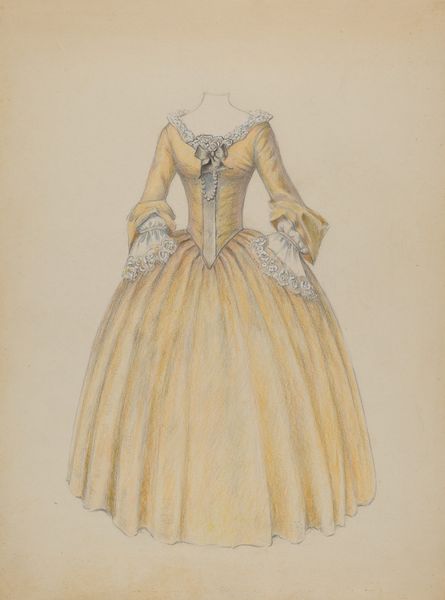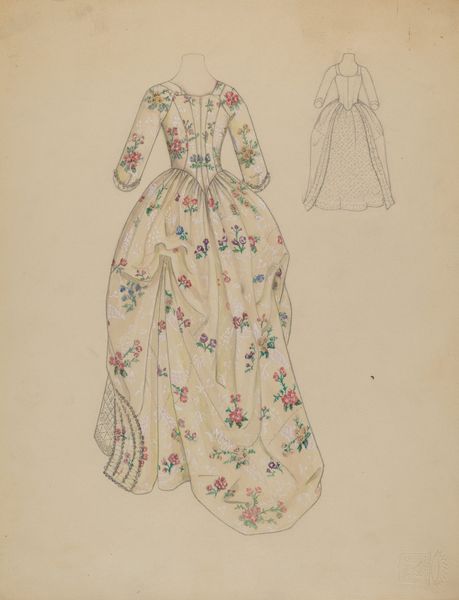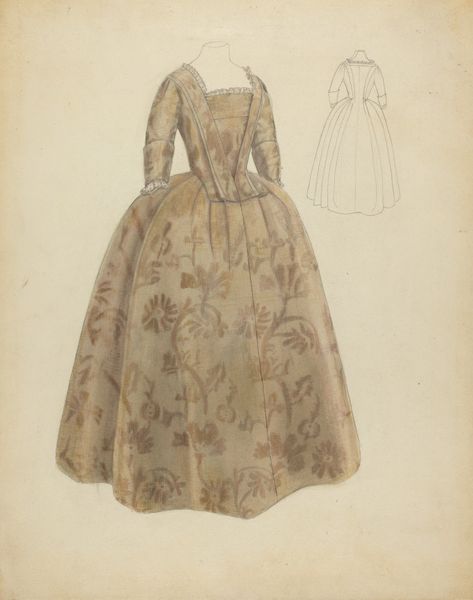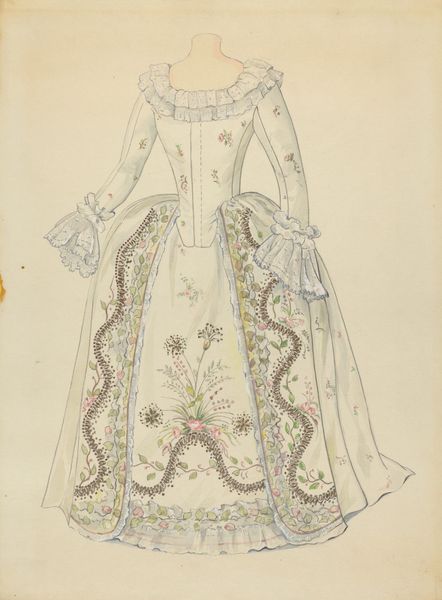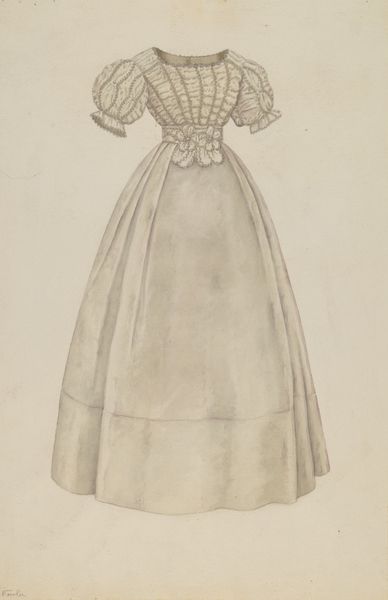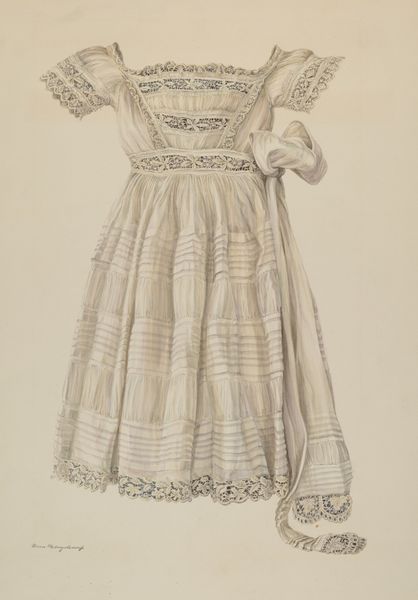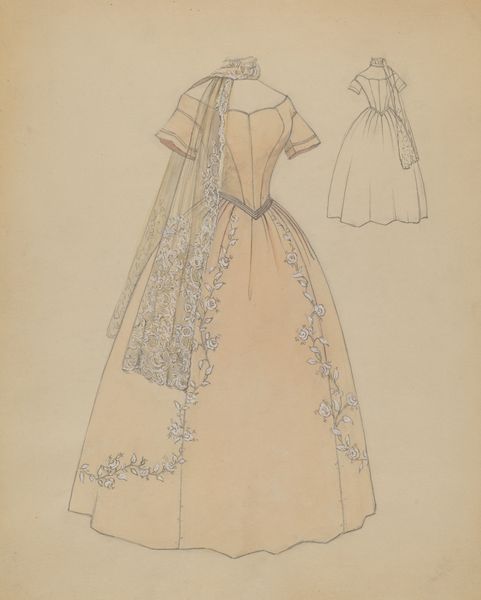
drawing, paper, watercolor, pencil
#
drawing
#
pencil sketch
#
paper
#
watercolor
#
pencil
#
academic-art
Dimensions: overall: 45.6 x 37 cm (17 15/16 x 14 9/16 in.)
Copyright: National Gallery of Art: CC0 1.0
Curator: I am immediately struck by the delicacy of this rendering. The floral pattern, the vertical stripes... it all feels very light, almost airy. Editor: Indeed. This is "Dress," a drawing in pencil and watercolor on paper, created around 1938 by Bessie Forman. One must contextualize this type of delicate, detailed work with its time, no? Consider the role of fashion illustration and design during the late Depression era. A piece like this not only speaks to a sense of aspiration but also to the craftsmanship that persisted despite economic hardship. Curator: I am more intrigued by the formalism itself. The artist's choice to portray the garment frontally lends a certain weight to it, like an architectural elevation, and I wonder about her approach to line and texture, where thin pencil strokes combined with very controlled application of watercolor, serve to model and differentiate form. I notice the faint blue tint; its tonality unifies the presentation. It's fascinating to me how form is described through subtle manipulations of tone. Editor: True, but one might also think of the social function of such designs at a time when mass production began making inroads. The image presents an ideal, reflecting values attached to fine apparel as a form of cultural capital. Further, such imagery gave consumers options and possibilities. In particular, such imagery created the impression of exclusivity and sophistication that manufacturers tried to provide. Curator: Exclusivity, perhaps, but there’s also a kind of constraint at play. The way the drawing is staged within the neutral space, devoid of a body… It removes this piece from the realm of active movement or practical social function, distilling it into a silent symbol, an icon for an imagined consumer, one constrained to appreciate a dream. Editor: Perhaps we can appreciate both aspects--the interplay of lines, color, and shading, and the broader context of societal values and market mechanisms. It's a piece of deceptive beauty, prompting conversations about form, style, and commerce of fashion. Curator: I agree. There is real conceptual complexity beyond its obvious refined surface.
Comments
No comments
Be the first to comment and join the conversation on the ultimate creative platform.
